Ses Fontanelles shipwreck
Bay of Palma, Mallorca
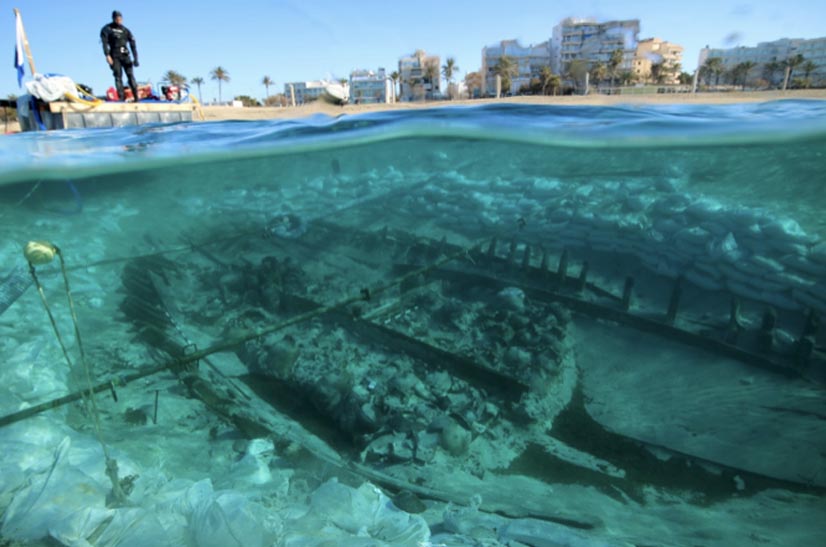
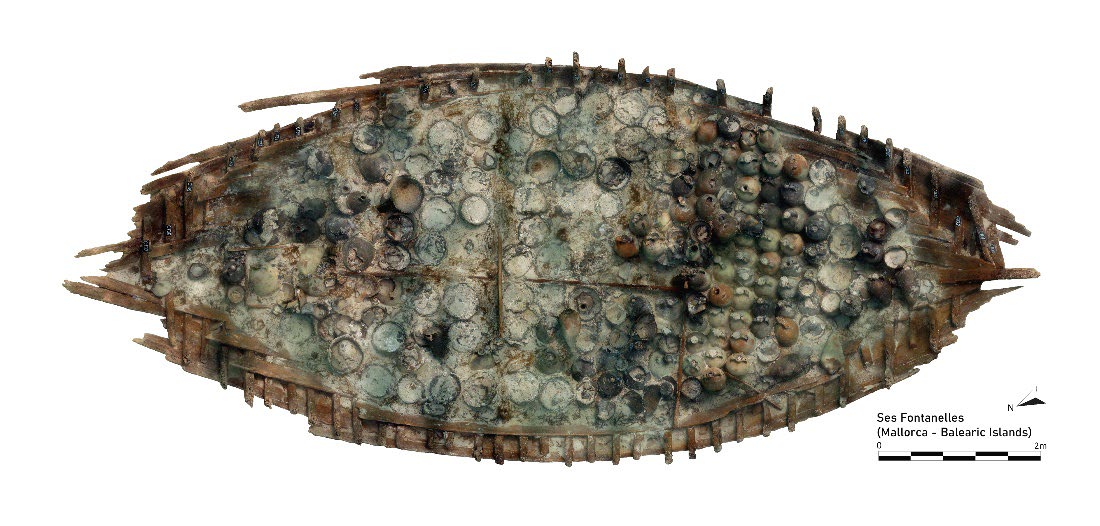
At the end of 2021, the Consell de Mallorca signed an Inter-institutional Collaboration Agreement with the University of Barcelona, the University of Cádiz and the University of the Balearic Islands for the development of the three-year project ARQUEOMALLORNAUTA (2021 – 2023): the fundamental objective of the project is to develop various strategic actions to analyze maritime traffic in Mallorca in Late Antiquity through underwater finds.
Especially relevant in this context is the Late Roman wreck of Ses Fontanelles, which appeared by chance in the summer of 2019 on one of the busiest beaches in Palma de Mallorca (Balearic Islands, Spain). The initial task of the project was in which Strategic Action A of the aforementioned inter-institutional project consisted in the integral excavation of the cargo of the vessel, developed between the months of November 2021 and mid-February 2022.
The results obtained have been frankly exceptional, since they have allowed to recover in full the cargo of the boat, sunk in the fourth century A. D. in an excellent state of conservation.
A group of about 300 transport amphorae has been recovered, some of them fully preserved and others complete, but fragmented. These are transport containers that denote a mixed load, as they were used for the transport of both fermented fish sauces (especially the so-called “liquamen flower”) and oil and fermented wines or musts for the conservation of fruit (the so-called defrutum or sapa by the Romans). The international relevance and notable historical importance of these amphorae is that they are complete, in addition to presenting painted inscriptions (the so-called tituli picti) next to remains of the original paleocontents, which constitutes a practically unique occasion at a global level. In addition, it is worth highlighting the typology of these amphorae, since it has been possible to identify some unknown containers. Regarding the inscriptions, a hundred signs painted on the amphorae have been recovered, which makes the wreck of Ses Fontanelles the largest collection of tituli picti in Spain, and one of the most important in the entire Roman world after the well-known case of Monte Testaccio in Rome. Its study in the coming months will allow to deepen the onomastics of the merchants dedicated to the maritime transport of these containers, who acted well alone, well-formed commercial consortia of several people (the so-called societates). In addition, painted inscriptions have appeared related to the food object of trade, highlighting for its uniqueness those alluding to the oleum dulcis or “soft oil”, which we also know was part of a lot marketed perhaps by an ecclesiastical authority, as can be deduced from the inscription that appeared on the ceramic stoppers that sealed them, with names and with the Chrismon (or monogram of Christ).
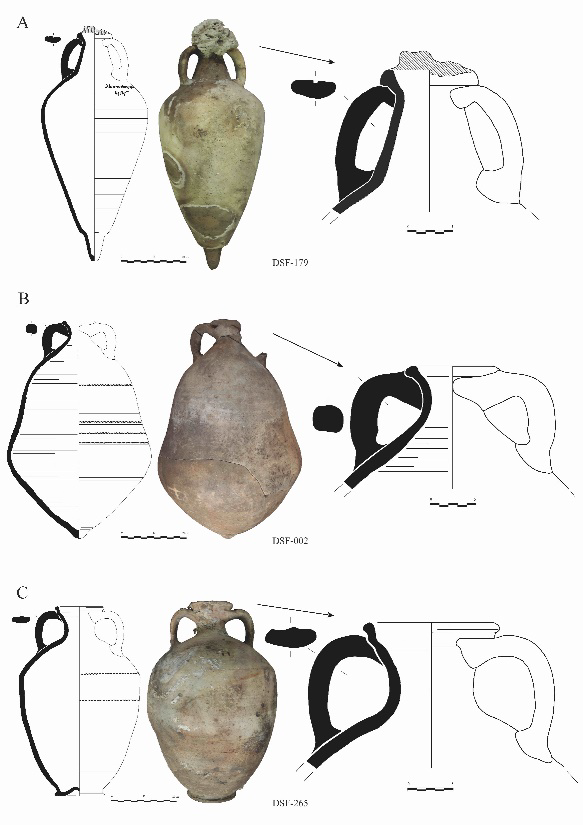
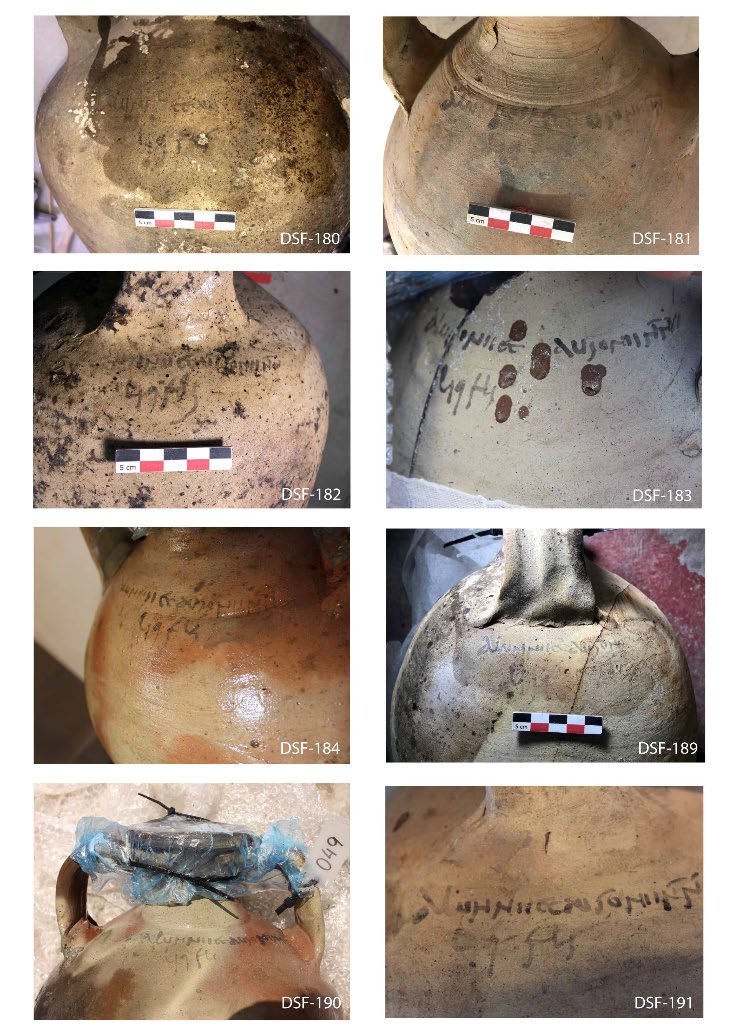
We must also highlight the excellent state of conservation of the naval architecture of the boat (12 m long by 6 m wide), with unique elements, as is the case of the wooden bulkheads of separation of the load or the conservation of the bilge well. It is important to highlight the good state of conservation of the wood of the boat, thanks to the anoxic environment of burial.
Exceptional are also both the geographical origin of the ship (surroundings of Carthago Spartaria – Cartagena), being the first known Roman wreck with a cargo from this region shipwrecked in Mediterranean waters; and the date of the sinking, in the initial phase of Late Antiquity (4th century AD), moments in which there are few known ships in the Mare Nostrum, and many fewer still with Hispanic cargo.

During the excavation exceptional archaeological pieces have appeared. Such is the case, for example, of an arch drill used by riverside carpenters for the repair of the boat, which is the first of its kind to appear in Spain and of the few that are preserved around the World; or two shoes (one of esparto and one of leather), next to ropes used in the boat and organic remains of diverse nature.
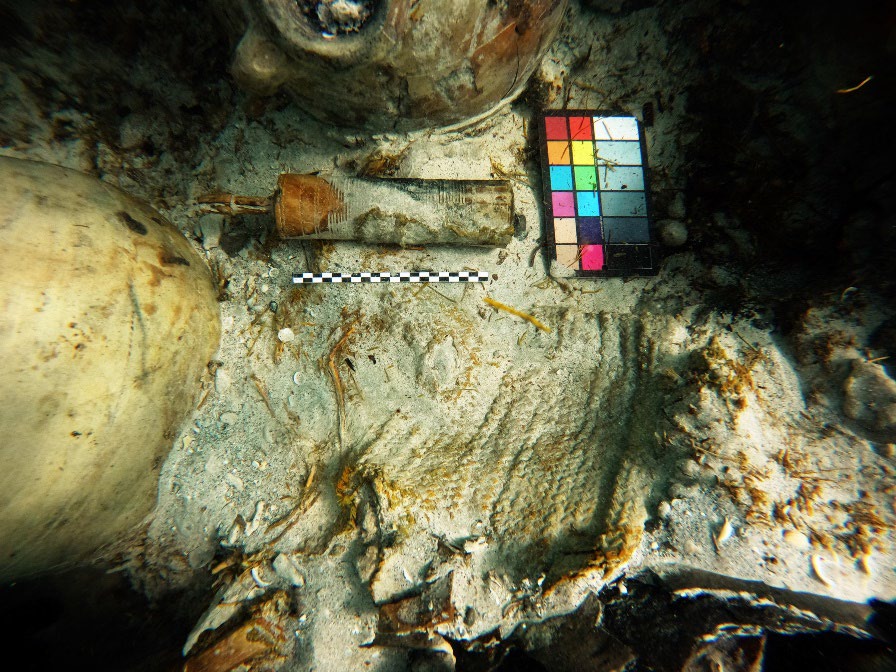
The wreck of Ses Fontanelles presents several weaknesses and threats because of its location just about 60 m from the current coastline and about 2 m deep below sea level. Its location on the wave breaking line poses a risk of potential destruction if the storms that led to its discovery occur again. In addition, it is subjected to an intense anthropic pressure, being located on one of the busiest beaches in Palma de Mallorca, with a high potential for plundering given its accessibility.
For all these reasons, the Consell de Mallorca, holder of the competences in matters of Historical Heritage on the island, has decided, in addition to proceeding with the integral excavation and recovery of the furniture, to propose the possibility of extracting the hull of the boat to guarantee its conservation and its future musealization and enhancement. That is why several specialists of recognized prestige have been invited during these days to make an external report on the importance of the find and on the convenience of its extraction to guarantee its conservation, being both archaeologists (Juan Blánquez, Professor of Archaeology at the Autonomous University of Madrid) and specialists in conservation-restoration (Luis Carlos Zambrano, former restorer of the Center for Underwater Archaeology of the Junta de Andalucía, currently assigned to the Museum of Cádiz; Christopher Dostal, Director of the Center for Maritime Archaeology and Conservation at Texas A&M University, and Xavier Nieto, former director of CASC-MAC and ARQUA).
All this has been possible thanks to the effort of an interdisciplinary team composed of about twenty researchers who have been working in the field and in the laboratory, to bring this archaeological activity to fruition; composed of the four co-directors of the project (Miguel Ángel Cau Ontiveros. Profesor de Investigación ICREA. Universitat de Barcelona; Darío Bernal Casasola, Catedrático de Arqueología. Universidad de Cádiz; Enrique García Riaza. Catedrático de Historia Antigua. Universitat de les Illes Balears; Jaume Cardell Perelló. Jefe de Servicio de Arqueología. Consell Insular de Mallorca); the two co-directors of the archaeological activity together with the previous ones (Carlos de Juan, Universidad de Valencia, specialist in Roman naval architecture, y Sebastià Munar, underwater archaeologist); specialists in marine geophysics applied to archaeology (Felipe Cerezo, Soledad Solano) and a dozen underwater archaeologists (Miguel San Claudio, Antoni Talavera, Joan Santaolària, Xim Gual de Torrella, Stella Rendina), and various collaborators (Martí Binimelis, Alicia Gallardo) and Navy personnel (Alberto Caballero, Raúl Hellín) and the GEAS of the Guardia Civil (Ángel Vera, Luis Miguel Pérez, Francisco Javier García, José Carlos López); specialists in conservation – restoration (Elisa Fernández y Luisa Arnal), as well as researchers specialized in photogrammetry and audiovisual communication (José Antonio Moya Montoya), graphic documentation of archaeological furniture (José Alberto Retamosa y José Luis Portillo) and amphoric epigraphy (Piero Berni).
In addition to the Consell de Mallorca and the three universities involved, the support and sponsorship of Ports IB is appreciated, and the active collaboration of the Ajuntament de Palma, Club Marítimo San Antonio de la Playa, the Bishopric of Mallorca, the Navy, Guardia Civil (GEAS) and the Historical Heritage Brigade of the Consell de Mallorca, without which this research project could not have been optimally developed.
Some References:
Bernal-Casasola, D., Cau Ontiveros, M. Á., Portillo Sotelo, J. L., Retamosa Gámez, J. A., Fantuzzi, L., Munar i Llabrés, S., de Juan Fuertes, C., Cardell Perelló, J., Pecci, A., Valenzuela, A., García Riaza, E., Berni Millet, P. (2022), Ánforas tardorromanas de la Carthaginensis en Mallorca: primera valoración del cargamento del pecio de Ses Fontanelles, Archaeologies of the Roman Mediterranean. Papers Presented in Honour of Prof. Simon Keay, Archaeopress, Oxford.
Cau Ontiveros, M. Á., Bernal Casasola, D., De Juan Fuertes, C., Munar Llabrés, S., Fernández Tudela, E., Retamosa Gámez, J. A., Portillo Sotelo, J. L., San Claudio Santa Cruz, M., Talavera Montes, A., Santolària i Sarabia, J., Gual de Torrella Roca, J., Rendini, S., Moya Montoya, J. A., Cardell Perelló, J., García Riaza, E. (2022), Excavación subacuática del singular pecio tardorromano de Ses Fontanelles (Palma de Mallorca, islas Baleares), in Cau Ontiveros, M. Á. (ed.), The Balearic Islands in Late Antiquity: History and Archaeology, Limina/Limites Series, Archaeopress, Oxford
Cau Ontiveros, M. Á., Bernal Casasola, D., Pecci, A., Fantuzzi, L., Picornell, Ll., Valenzuela, A., Retamosa, Portillo, Cardell, J., Munar Llabrés, S., García Riaza, E. (2022), Multianalytical approach to the exceptional Late Roman shipwreck of Ses Fontanelles (Mallorca, Balearic Islands).
Munar Llabrés, S., Cardell Perelló, J., de Juan, C., Cau Ontiveros, M. Á., Bernal-Casasola, D., Picornell, Ll., García Riaza, E. (2021), Ses Fontanelles Shipwreck (Mallorca, Balearic Islands): An Exceptional Late Roman Vessel and Its Cargo, Journal of Maritime Archaeology, https://doi.org/10.1007/s11457-022-09331-6
Soler i Nicolau, A., Font Jaume, A., Berni Millet, P., García Riaza, E., Bernal-Casasola, D., Cau Ontiveros, M. Á., Cardell Perelló, J., Munar Llabrés, S. (2021), El singular conjunto de tituli picti del pecio de Ses Fontanelles (Mallorca, islas Baleares) y su contribución a la epigrafía anfórica tardorromana hispánica, Cuadernos de Arqueología y Prehistoria de la Universidad Autónoma de Madrid (CUPAUAM) 47(1): 287-317.

